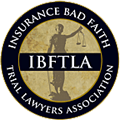Traumatic Brain Injury, Part 6: Interacting with Brain Injured Clients and Caregivers
Today’s post on Traumatic Brain Injury will focus on the people who are trying to help a brain injured client. This could be family members, loved ones, caregivers, and even lawyers. In so many of our clients who have suffered a traumatic brain injury, we have seen that his entire social network plays a role. Everybody has a degree of suffering due to the injury, and everybody plays their part in helping the brain injured client come along in his or her recovery.
There is a phenomenal amount of literature from various sources that provide basic guidelines on how to interact with a person who has suffered traumatic brain injury. So as with all of our posts on brain injury, today’s is not a substitute for seeking out the expertise of a healthcare provider, a psychologist or other professional in helping to care for brain injured individuals. There are plenty of sources for information on how to help a brain injured person, many of which are listed on the Brain Injury Resource Center section of our website, to help guide your search for assistance of your loved one.
As a lawyer who represents people with brain injuries, I’ve found it’s important to clearly communicate with our brain injured clients and give them an opportunity to be a very important part of the case. How we interact with our brain injured clients as lawyers is key to keeping our clients happy, to keeping our clients satisfied with their representation, and to be able to help them along the way in their case, as well as their recovery. We need to understand as much as possible what is going on in their lives; and they need to understand as much as possible what is going on with their case. Granted, sometimes with a severe brain injured client it is simply not possible for him or her to be highly involved. But very often it is possible to include them in the process, if we do our jobs as lawyers, and as human beings. We need to take the time and be patient, and provide the type of guidance in simple, clear terms so that our clients can feel in control. And the positive outcome from that is that it often advances the ball significantly in the case.
Additionally, as lawyers we should understand what is happening in the lives of our clients’ caregivers, especially when the caregiver is the spouse. How lost are we as people if we don’t understand the day-to-day interactions between the brain injured husband, and the caregiver wife? It is important for each of us to understand fully what is the role that the caregiver plays, and what are the stresses and the problems that they are likely to encounter. How can we help the caregiver get through the legal process if we don’t understand what they are up against mentally, physically and emotionally at home? So we have a role as lawyers engaged in this process to have as great an understanding as possible, not only of our clients, but also of the people in their lives who are helping them cope with their injuries and all the problems they are struggling with because of their acquired disability.
One very important concept that brain injury literature discusses, and something we see so often in our brain injury clients, is the concept of Maladaptive Behavior. This is basically the inability of the client to adapt behaviorally to their situation. It is often a barrier to seeking and/or successfully completing treatment. It is very, very normal for Maladaptive Behavior to occur in the early stages of brain injury. But where it is allowed to continue, Maladaptive Behavior can result in chronic behavioral patterns that then interferes with the ability of counselors and health care providers to maximize the brain injured patient’s recovery.
With every brain injured client, there must be a focus on the behavior, and the behavioral patterns, of the patient. Not just their feelings and emotions, or what is going on inside of them, but a real focus on how are they behaving and interacting. When the focus is on behavior, the caregiver can respond accordingly and provide an environment to deal with those issues in a positive, productive way. This means we also want to look at the environmental influences that affect behavior; the influences that affected the client before the behavior began, and the environment after the behavior stopped. We want to have a full evaluation of behavior and the environment interacting hand-in-hand with one another.
In literature, you will find reference to the ABC‘s of Behavior. There is the Antecedent, there is the Behavior itself, and there is the Consequence. The Antecedent includes things like tone of voice of the caregiver, body language, what demands are being made, and what is the environment providing. In evaluating the Behavior itself, it has to be clearly defined as behavior that is counter-productive to the rehabilitation goals and to the goals of the patient and the patient’s well being. We are talking about behavior that is observable, and that is identifiable. Then the Consequence must be positive reinforcement, rather than punishment. The patient has to be encouraged. Studies have shown that positive reinforcement provides the best opportunity for long term benefit to the brain injured client.
What is the spouse, the caregiver, the son, or the daughter to do in order to help the situation at home or in the care environment? As already mentioned, environment plays a significant role. The organized, planned approach has the best opportunity for increasing the success of the care. Some of the guidelines are things like allowing time for rest. As a client is dealing with a brain injury, their thinking is different, their behaviors are different, their interaction with their environment is different. They become extremely fatigued, so they need plenty of time to rest. But that can’t be an escape from complying with the clear guidelines of getting the client on track with a plan to help them confront their brain injury.
Another guideline is to keep the client’s environment simple. Make sure they are not overstimulated or confused by a busy environment. A simple and clean environment is an easy way to help them avoid becoming overstimulated and even more fatigued. And what goes hand-in-hand with that is that instructions ought to be simple, too. Use non-verbal cues, simple commands, and things of that nature. Give feedback and set goals. People with brain injuries often have a lessened capacity to self-monitor and self-guide. So set goals, monitor the patient, and provide simple, constructive feedback to help them along their way. And again, be calm, patient, and provide constructive feedback along the way; not feedback that appears punishing, but feedback that is simple, clear, calm, and given in a directed way so that the client with a brain injury can move forward with his or her care.
Often it is important that the brain injured client feels in control, so it is good to provide choices. Instead of dictating what he or she needs to do, give them reasonable choices so that they can choose. Now, the choices need to be limited, and they need to be controlled, but they are choices nonetheless, and they are reasonable, positive choices. Decrease any chance of failure by providing simple tasks, simple choices, things that are within the current range of possibilities for the client to have a high rate of success. Vary the activities and keep the choices interesting. At appropriate times, intersperse easy tasks and difficult tasks. Always plan to make sure there are enough activities, and task analyze so that the more complex tasks are broken down into their component parts and each task that can be done step by step. That will help the brain injured client along the way.
It is never easy to be a care provider for a brain injured person. I have found that brain injured patients and their care providers are some of the most courageous people I have ever met. It is always an honor and a privilege as a lawyer to represent people with brain injuries, their families, and their care providers.
Whether you are a care provider reading this, whether you are a medical care provider, or whether you are another brain injury lawyer, I hope you’ll take to heart these basic guidelines for interacting with a person who has suffered traumatic brain injury. If you are a lawyer, take all this to heart and understand what is going on in your client’s life. Understand how you might be able to do things better in your own office, so that when helping somebody with a brain injury, you can provide them the greatest level of help in a way that is most beneficial to them, and in a way that allows them and their family members to be an active part of the process.

















